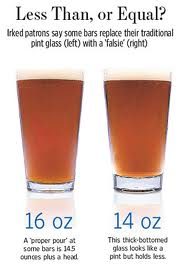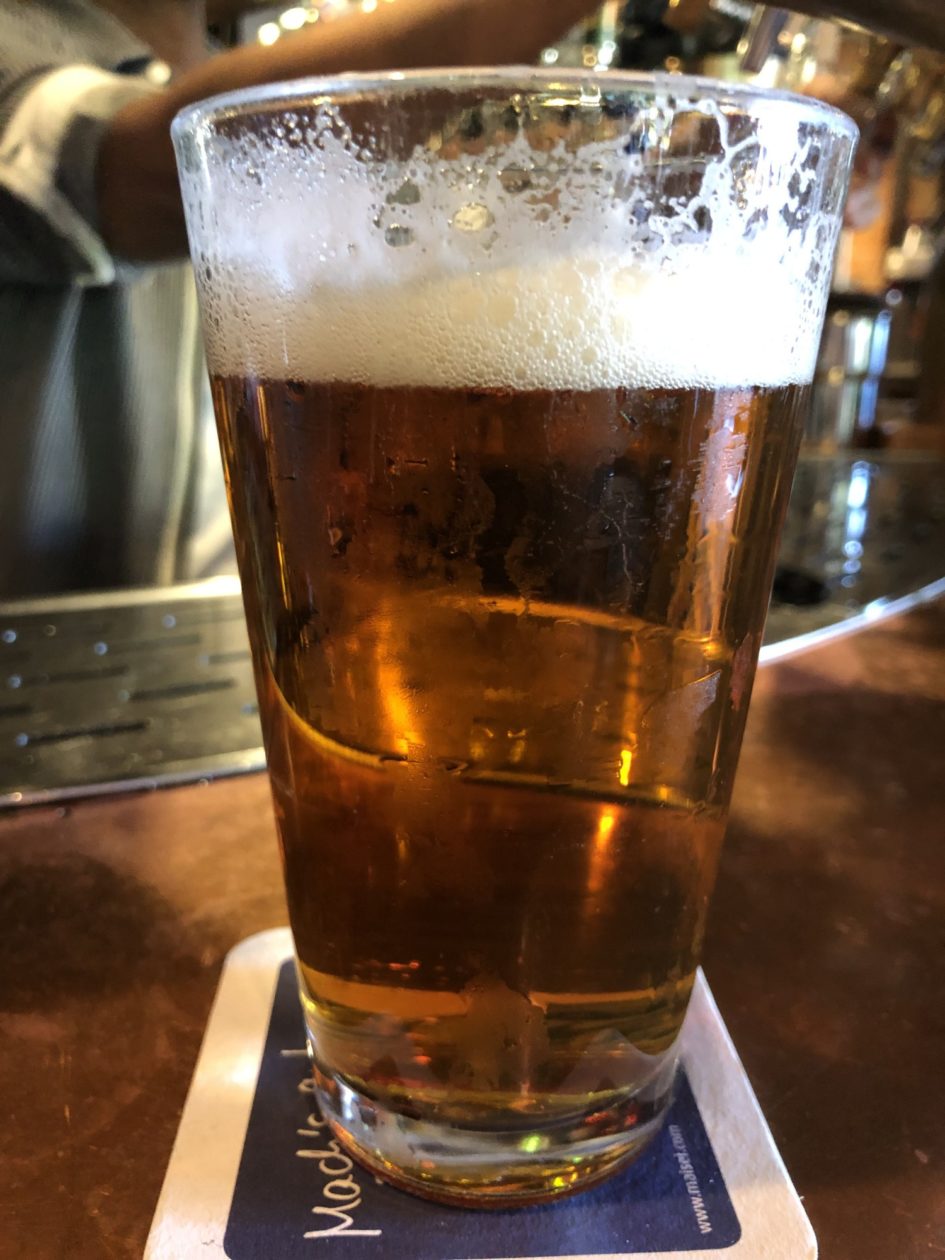Over the past few years provincial governments across the country of various partisan stripes have happily gathered the local media to proclaim grand “loosening” of liquor laws. Most of the time these announcements end up being pretty thin gruel – relaxing opening hours to accommodate world cup soccer, making opening hours more flexible, granting greater privileges to brewery tap rooms, allowing limited consumption in parks and other public spaces.
None of these are bad, in and of themselves, and the fact they don’t live up to the communication flack’s hyperboles doesn’t reduce their impact. But, come on. Really? Is this the best you can do?
Sure, I am happy to have the right to (legally) drink a beer in a park and to (if I even wanted to be up at that hour) drink a pint at 6:00AM to watch England battle Trinidad in soccer. But these things are marginal in their impact on consumers, and so are hardly worth paying attention to.
You want to make change in the beer world? Regulate serving sizes in pubs.
Sure there are plenty of regulatory labyrinths that could and should be dismantled. Most, however, exist on the producer end, not the consumer end. And, to be clear, beer sales in grocery/convenience stores is not the panacea many think it is. It is just an extension of the lousy offerings that privatization has created in Alberta (but more on that in a different post).
If you want to improve the life of the consumer, tell pubs and restaurants what sizes they need to serve. I have ranted about this before (here, here and here, for example). I am firmly part of the a-pint-is-a-pint-is-a-pint movement. I strongly believe that consumers are being misled about the size of the beer they are receiving, and are far too often being shortchanged.

The core of this problem is that there are no regulations that apply to bars that addresses standard serving sizes. As a result we see everything from 398 ml (14 oz) to 568 ml (20 oz) being sold as a “pint”. Sure, somewhere on the menu in small typeface the establishment has to indicate how large the serving size is, but most customers never see that. They walk up to the bar and order “a pint” of something.
Pubs do this to keep prices low. Rather than have to charge $9 for a full pint, they cut the size and charge $7. Or worse, they charge $8 and scoop up the extra profit. And the customer is none the wiser. And that doesn’t even address the issues of pouring with a big head or short pouring, which can knock another couple ounces off the volume.
Sure, you can argue caveat emptor and say it is up to the consumer to research their purchase. But what options do they really have? Are we expected to take a measuring cup with us to the pub to confirm the volume we are receiving?
There are a couple of establishments in Edmonton I refuse to frequent because I know they serve 14oz “pints”. My favourite places are fairly transparent about volume, so I go in knowing I might get 16, 18 or 20 ounces, depending on the beer.
My preferred solution would be to mandate serving sizes like they do in Europe. There can be multiple options, but they need to be clear to all involved. A pint has to be 583 ml (the official measure in Canada). You can serve a sleeve/glass, defined as 398 ml, or some other measure (e.g. half pint for higher alcohol beer), but it will ensure a pint is a pint is a pint.
This protection would not be hard to implement, although there are valid questions about effective enforcement. It would have a much bigger benefit for consumers than odd opening hours, restaurant off-sales or drinking in parks. It doesn’t even require a regulation – liquor board policy can handle the task as part of the requirements of holding a liquor license. The AGLC can set definitions for serving size and require licensees to clearly indicate which size they are using.
I can hear some of you saying that I am just being a pedantic nitpicker. I get that on the surface it might seem like government overreach – telling businesses how to run their business. But there is a real information and power imbalance here that works at the expense of consumers. And when that condition exists governments need to step in to reduce that imbalance.
Size matters. If the consumer thinks they are getting a real pint, and are prepared to pay the price of a full pint, but getting 30% less beer than they thought, they are getting ripped off. That becomes a legitimate issue of consumer protection.
Responsible adults have been consuming beer in parks for years (ever heard of a travel mug?). If I can’t go to my local to watch the stupidly early morning match, I can do it at home and drink as much as I want (and then regret it the rest of the day). Serving size has a much larger reach than either of those issues. Thousands of consumers don’t know just how much they are being shortchanged.
So, I say “whatever” to consumption in parks. If you want to win my support as a beer consumer, regulate the damned serving sizes. Then we will be talking smart liquor laws.


August 2, 2020 at 1:23 PM
I wholeheartedly agree! When you order a “pint”, you should get a “pint”, and not a 16 oz US pint, either. You think that you are getting a deal, but you are getting what you pay for. (I hope!)
August 5, 2020 at 12:02 PM
HI.
A friend of mine sent me this knowing how pissed off I get when I hear customers order a pint and receive a “sleeve” with no correction from the bartender.
In my opinion however, the solution is not regulation but enforcement of the current federal law. Pint is a legal measurement and it would take no effort for AGLC inspectors to walk in and order a pint. If they didn’t get one or if they weren’t informed of the serving size, hammer the bar with a $2000. fine. Granted that’s the maximum fine under the Weights and Measures Act, but it would change behavior and make the bars be honest. No additional regulations (since we have too many already) just enforcement of what we have.
Thanks for your posts!
August 16, 2020 at 5:20 PM
One of the issues here is that AGLC inspectors can’t enforce federal legislation. They can only enforce AGLC rules. That is why there needs to be provincial regulation around this issue. Thanks for commenting!
August 16, 2020 at 7:14 PM
True, but a friend of mine is with Measurement Canada, and he says that you can file a complaint with them.
August 16, 2020 at 8:18 PM
Sure. I get that. But that is passive enforcement. Requires citizens to take an active step. Liquor board inspectors are active enforcement. They are in establishments on a regular basis and so best placed to ensure volume rules are met. But they can’t do that without provincial rules. That is why I call for provincial regulation in this area.
Cheers!
August 6, 2020 at 11:37 PM
Am I correct in saying that there is a minimum measure for liquor in licensed premises? Am I correct in saying that there is a minimum correct volume for a “Litre” of gasoline? milk? ice cream? Same for a “yard” of gravel….”cord” of wood?
Why varying volumes for a “pint” of beer…try that in Europe and see what happens!!
I say if it ain’t a pint you can’t call it a pint
August 9, 2020 at 12:53 PM
Totally agree as well!
Size does matter. We had an interesting experience about 10 years ago. We ordered a container of Polish crystal glasses with our logo and a line at the top at the 20 ounce mark. They were good looking glasses, and we put them out into the trade. One diligent barkeeper noticed that he wasn’t getting as many pints of our products out of a keg as others. Our first thought was to check our kegging equipment for short fills. No problem there. Marketing got the Brewmaster involved. Of course he takes a glass to the lab. Turns out the glasses were 20 US ounces, not Imperial! So every glass was 4% bigger than advertised! Marketing now must check with Operations before ordering merchandise of this type.